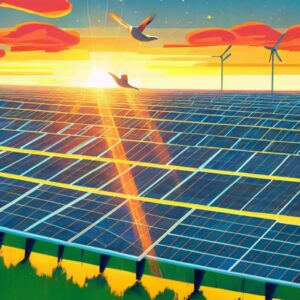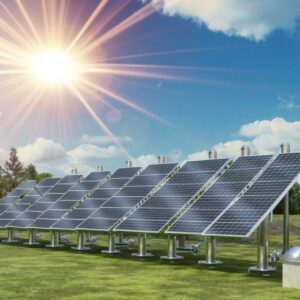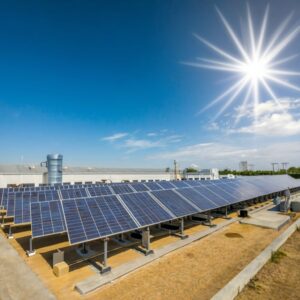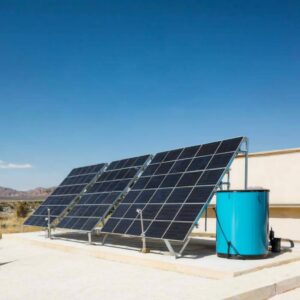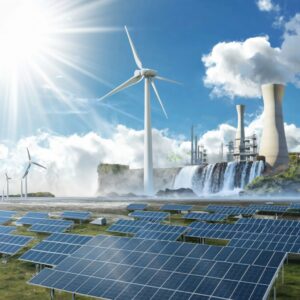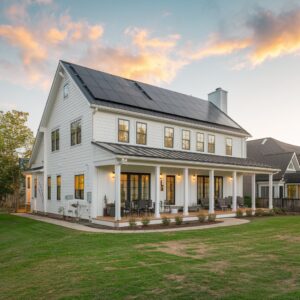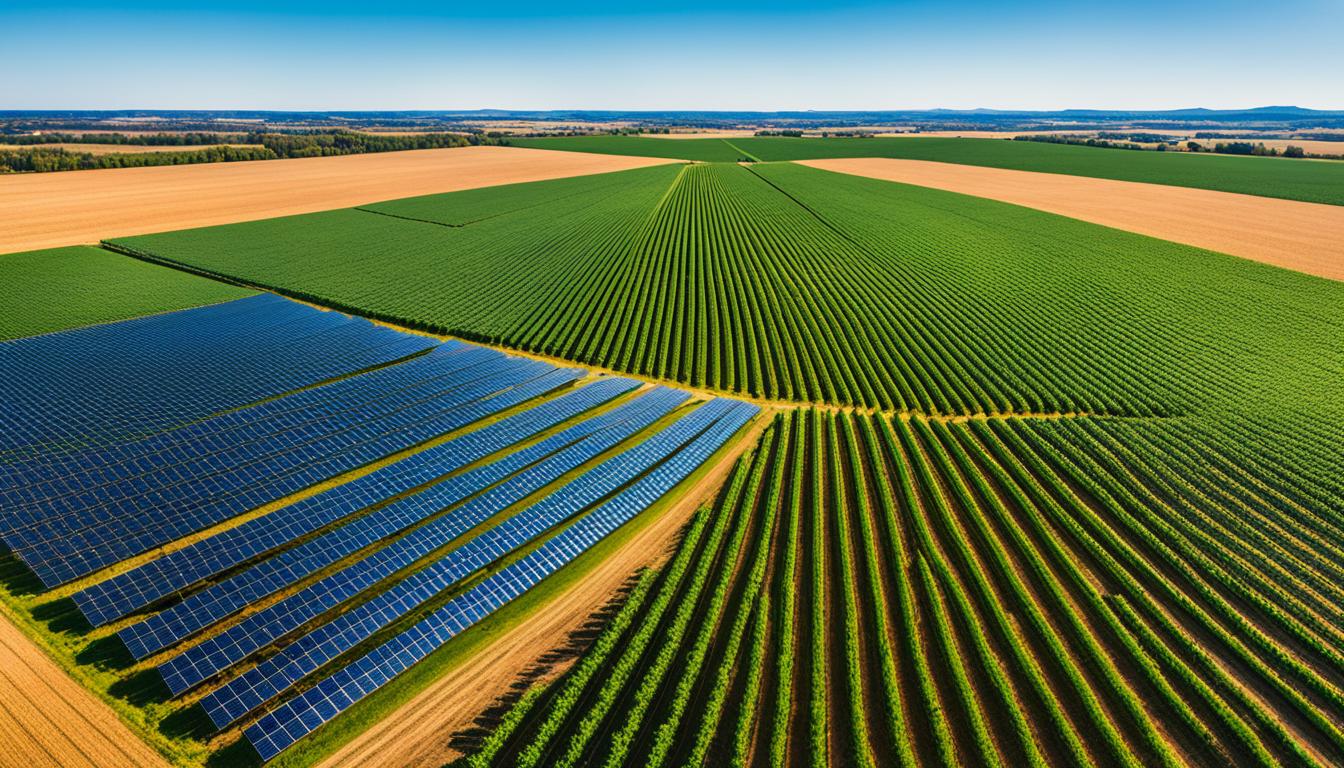
I’m thrilled to tell you about solar energy changing farming for the better. It’s leading us towards a greener, more sustainable future. Solar power has become a key player in farming all over the country. It’s time to see the big wins from using the sun to save and protect our planet.
Key Takeaways:
- Solar energy is an eco-friendly and renewable power source that helps reduce carbon emissions.
- Installing solar panels on farms can save money and even generate profits by selling unused energy back to the grid.
- California has set renewable energy goals to reduce greenhouse gas emissions and increase renewable energy use, making solar energy a priority for farmers.
- Solar farms are becoming more common in California and can generate enough energy to power thousands of homes while reducing carbon dioxide emissions.
- Leading dairy farms like Joseph Gallo Farms and Lakeside Dairy have already embraced solar energy and are reaping the benefits of sustainable practices.
Agrivoltaics: Combining Solar Energy and Agriculture for Sustainable Land Use
In the search for a healthier planet, agriculture has found a smart way to merge solar energy and agriculture. This is called agrivoltaics. It works by tapping into solar power with solar panels on farms. This way, farmers can grow crops while generating clean energy.
Unlike regular solar farms, agrivoltaics places energy production alongside farming. It’s a step towards better land use and less harm to the environment. This setup gains renewable energy and supports either farming or protecting natural areas.
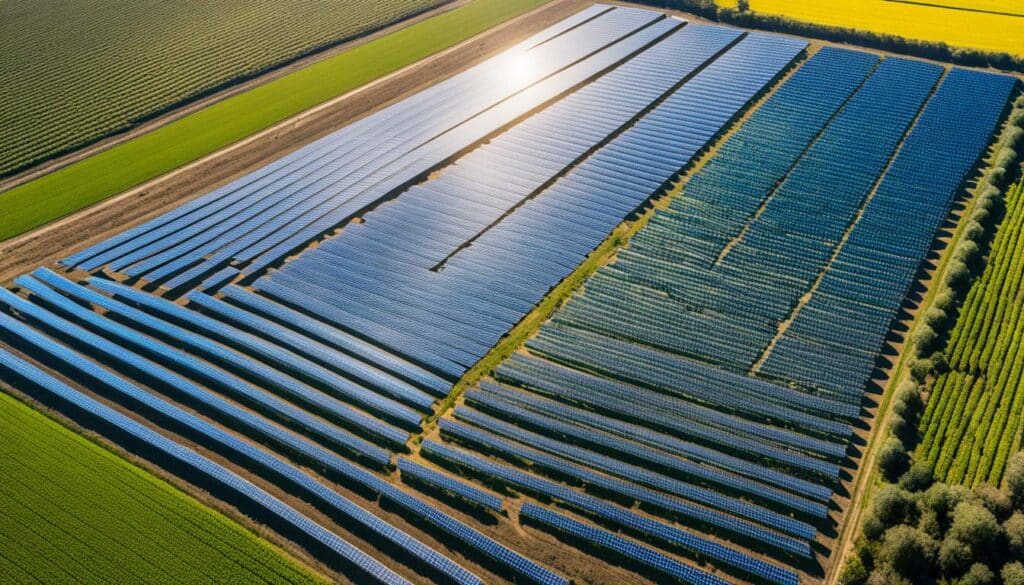
A unique benefit of agrivoltaics is having many uses in one setup. Solar panels offer shade and protection, making animals on farms happier. Farm animals, in turn, help keep the area clean by eating plants or adding nutrients to the soil.
The InSPIRE project studied how solar energy and farming can work together well. The research highlighted the big wins and smart ways to do agrivoltaics.
Five key parts are critical for agrivoltaics’ success:
- Climate, soil, and environmental conditions
- Configurations, solar technologies, and designs
- Crop selection and cultivation methods
- Compatibility and flexibility
- Collaboration and partnerships
Focusing on these elements helps farmers blend solar energy and crops effectively. They cut down on environmental damage and secure a better economic future.
Environmental Benefits of Agrivoltaics
Agrivoltaics has a lot to offer the planet. It uses the same area for solar energy and growing food, so less new land is needed. This helps keep natural spaces and wildlife safe.
The shade from solar panels also reduces water loss and keeps the ground moist. This helps save water, which is great for the environment. Plus, it speeds up the switch to clean energy, easing off the use of harmful fuels and helping fight climate change.
| Benefits of Agrivoltaics | Explanation |
|---|---|
| Reduced environmental impact | Agrivoltaics cuts down on needing more land and saves natural areas. |
| Reliable income for farmers | Solar energy becomes a steady income source, making farming more sustainable. |
| Accelerated transition to renewable energy | This mix of energy and farming boosts green practices and lessens fuel needs. |
Solar vs. Oil and Gas: Why Solar is a Better Option for Farms
Solar energy is the best choice for farms compared to oil and gas. Using mineral leasing for fossil fuel exploration can bring big economic risks to farmers. It can also harm the environment. Solar energy has a smaller negative impact on the environment. It also has fewer risks for the economy.
Solar panels have many benefits over oil and gas. They don’t contaminate the soil or water. Solar energy doesn’t need a lot of water to work. It also doesn’t make any toxic waste. This means that solar power is better for the environment and for people. Farmers can use this clean and safe energy for their land with ease.
Farming with solar power, called agrivoltaics, can bring extra money to farmers. It also helps in using more renewable energy. By using solar panels, farmers can produce power and grow crops at the same time. This way, they can manage their land better. It also helps to keep the farmlands safe and use less wild space for energy.
FAQ
How can solar energy benefit farms?
What is agrivoltaics?
Can solar energy and agriculture coexist on the same land?
What are the environmental benefits of solar energy compared to oil and gas development?
How can solar energy help meet the energy demands of farms?
Are solar panels a better option for farmers compared to traditional power sources?
Source Links
- https://www.nrel.gov/news/program/2022/growing-plants-power-and-partnerships.html
- https://drinkmilkinglassbottles.com/how-some-california-farms-are-using-solar-energy-in-agriculture/
- https://kleinmanenergy.upenn.edu/research/publications/harvesting-the-sun-on-farm-opportunities-and-challenges-for-solar-development/

